Bowhunting Thickets Effectively Across the Midwest
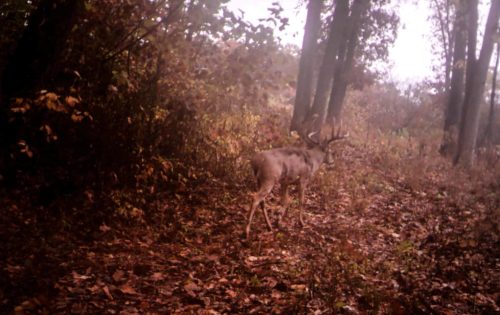 Thickets provide quality food and security for mature bucks. Especially in the Midwest, thickets consist of quality browse food sources such as dogwood, honeysuckle, and green briar. Hunting a thicket, commonly used as a bedding area can be challenging for a few reasons- finding a clear shooting lane through the thicket and a tree big enough for a treestand, and a quiet access route to your stand location in thick cover. If you believe a specific buck is using a thicket as his dominant bedding area, you have to be extremely cautious hunting them. You may only get one opportunity, so you’ll want to make sure all the wind and weather conditions align in your favor.
Thickets provide quality food and security for mature bucks. Especially in the Midwest, thickets consist of quality browse food sources such as dogwood, honeysuckle, and green briar. Hunting a thicket, commonly used as a bedding area can be challenging for a few reasons- finding a clear shooting lane through the thicket and a tree big enough for a treestand, and a quiet access route to your stand location in thick cover. If you believe a specific buck is using a thicket as his dominant bedding area, you have to be extremely cautious hunting them. You may only get one opportunity, so you’ll want to make sure all the wind and weather conditions align in your favor.
Bowhunting Bedding Areas
I believe the most effective way to hunting thickets or bedding areas is to set up on the downwind side and intercept mature bucks scent checking for does. Especially during the early stages of the rut, mature bucks will cruise from one doe bedding area to another searching for the first does coming into estrous. Here’s a few tips and an example of how you can effectively bowhunt a thicket.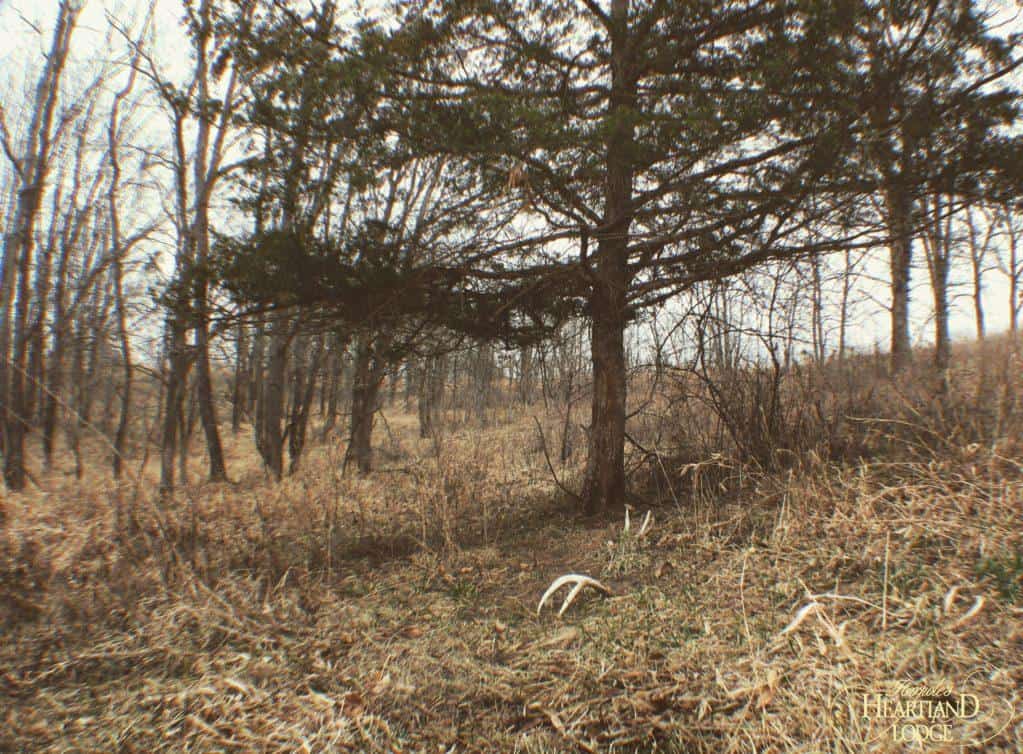
One of the farms I hunt in the Midwest consists of an overgrown cow pasture thicket that consists of greenbrier, honey locust, multiflora rose, and hedge. The thicket itself is approximately 10 acres in size and is so dense it can be hard to crawl through even. It’s an ideal example of the types of thickets you can find throughout the Midwest. Farmers of yesteryear used to run cattle or hogs in small 1–10-acre areas. Several decades later, those areas are now acting as vital habitat features for a variety of wildlife species. This thicket, centered in an oasis of agricultural fields, cow pastures, and open hardwoods. It’s no surprise that for several decades this particular thicket continues to draw multiple upper-age class bucks in the area. Hunting this particular location, however, has proved to be challenging.
This thicket does not provide a tree big enough to support a tree stand. So, we have had to hunt the fringes of the thicket itself, setting up over the primary trails leading into and out of the area deer are bedding in. There are only a handful of trees that we could put stands in and every year it would seem that the mature bucks would randomly access the thicket on the downwind side using trails that we were not set up on. Because there were multiple trails accessing the thicket on primarily flat ground, mature bucks were not funneled down to any particular route. Because it was so thick, getting a clear shot on more than one trail seemed to be almost impossible.
After a frustrating season of playing cat and mouse with an impressive 5 ½ year old buck that had been utilizing the thicket regularly, we came up with a game plan to “narrow down” where the deer could access the thicket on the downwind side and manipulate the trails so that it would bring them within bow range.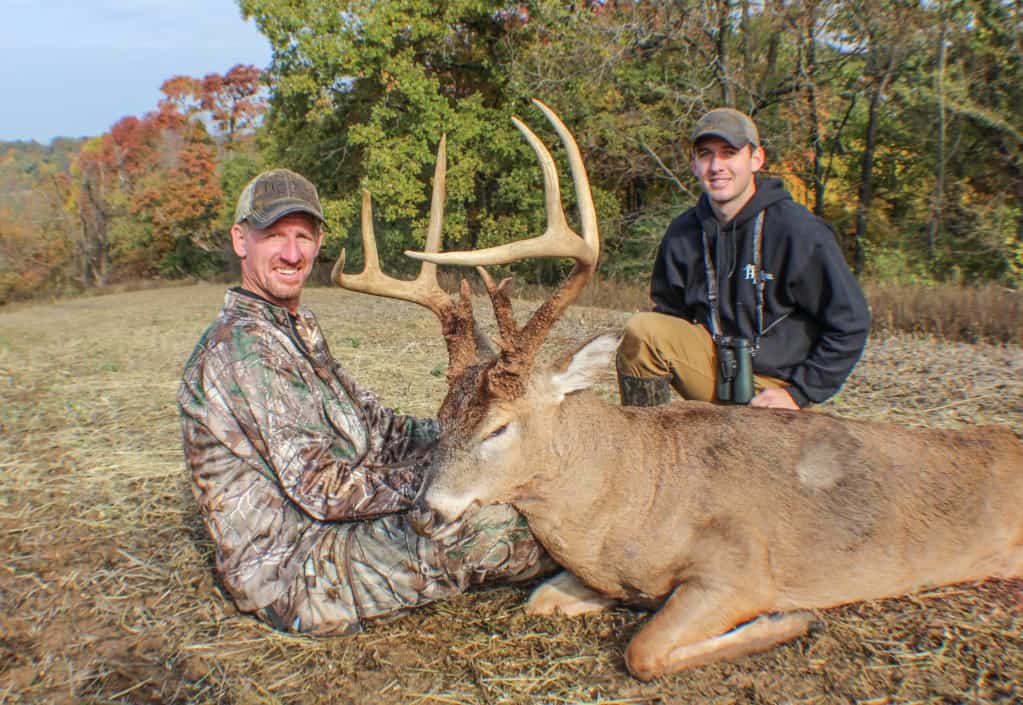
We decided the best plan of attack would be to take a walk behind brush hog and create two primary trails that would access the thicket. Trail “A” would be a bit wider and more distinct; we made it about four feet wide and really cut back all the branches and other debris that acted as obstacles to deer. We ran it horizontally to our tree stand position. Trail “B” however, was created with the buck in mind. We cut only about a two-foot strip out and did not clear it out as well as trail “A”. We cut trail “B” angling slightly toward trail “A” and all the way into the thickest part of the bedding area.
The idea was to make trial “A” (white line in picture), a primary “doe trail” leading into the thicket, while trail “B” (yellow line) would be thicker and would allow a mature buck to feel more secure, with a North-West wind, a buck would be able to scent check the thicket and trail “A” for estrous does, all the while being upwind of our treestand location (red dot) and downwind of the primary bedding area. 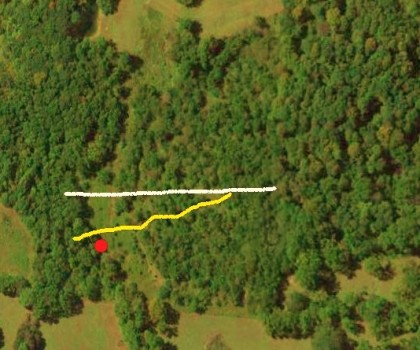
In the middle of summer, we went in with the walk-behind brush hog and chainsaw opened up the trails. It was one of the hottest days of the summer, mosquitoes, ticks, and ground hornets prolonged the cut, but we were able to get everything done within a day.
A few months later, in late October, the weather conditions aligned, and the stage was set. With a cold front moving through the night before, and the winds switching to North-West, I slipped into the treestand on the downwind side of the trails. Just minutes after legal light, I heard movement to my left and peered around the tree to see antlers bobbing through the heavy fog directly towards the stand. Right on script, the buck hit the first trail and walked directly down trail “B”. I stopped him with a grunt quartering away at just 18 yards and the arrow connected.
*Several years after creating the buck “sneak trail”, we have harvested 2 more mature bucks off the same trail on a crosswind from the doe bedding area!
In conclusion, if you have a thicket on your property that you can access without bumping deer and leaving scent over trails leading in or out of the thicket you may have a perfect ambush opportunity. Find the main access trails to the thicket on the downwind side and determine whether or not you can manipulate them to put a mature buck within bow range. If you do not have access to a brush hog, you can still funnel deer down using other techniques. You can build short sections of fence, hinge cut trees, or cover trails with brush to improve your chances of funneling deer past your treestand location.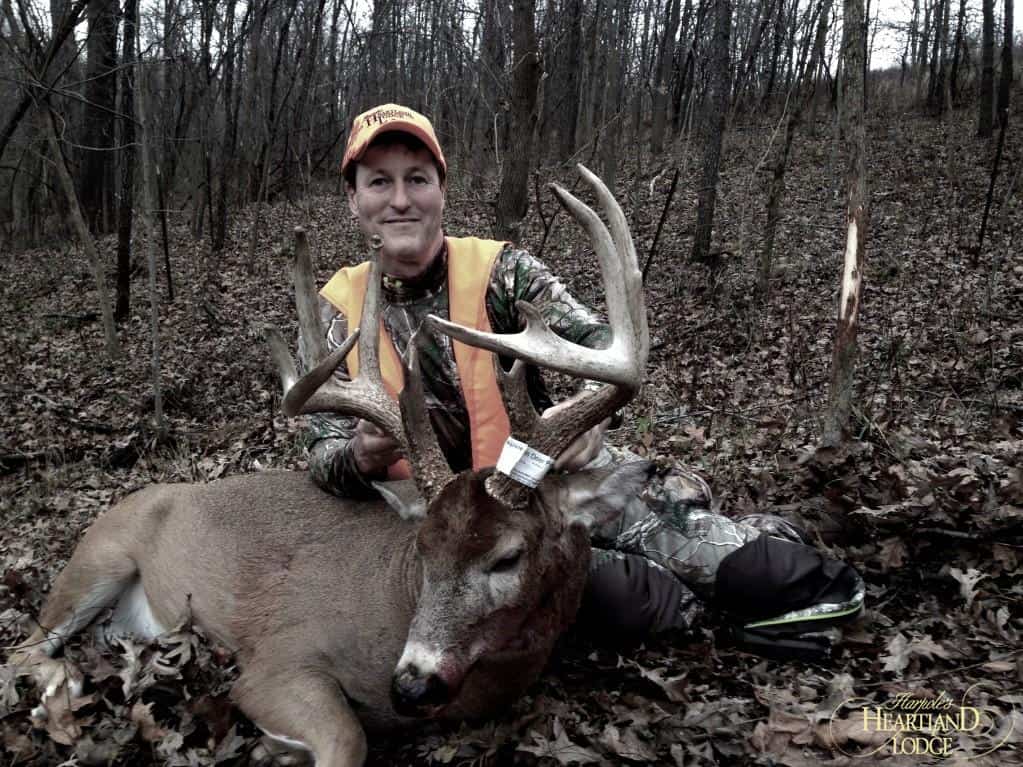
To read how Scott Pyle harvested a 170″+ while hunting a thicket in Mid-November at Heartland Lodge click here>>.
-Zach Jumps
Last Updated: October 8th, 2024




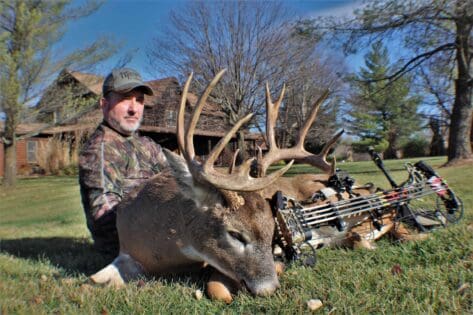
Great story! I used the very same setup this past gun season and shot a very nice main frame 10 point with 7 kickers, on a first time hunt of my spot!
Thanks for reading Steven! Congrats on your big buck!!